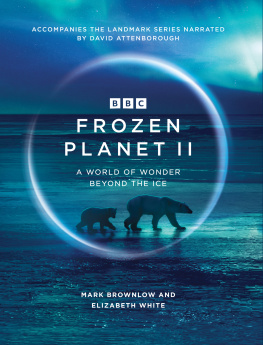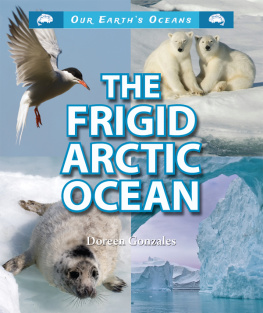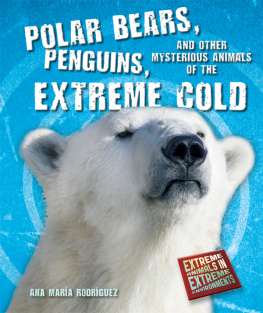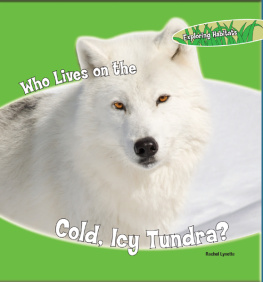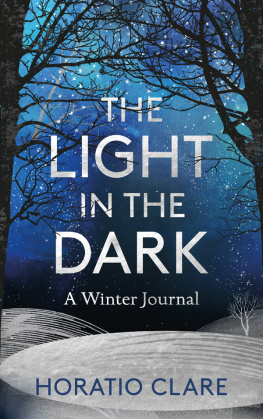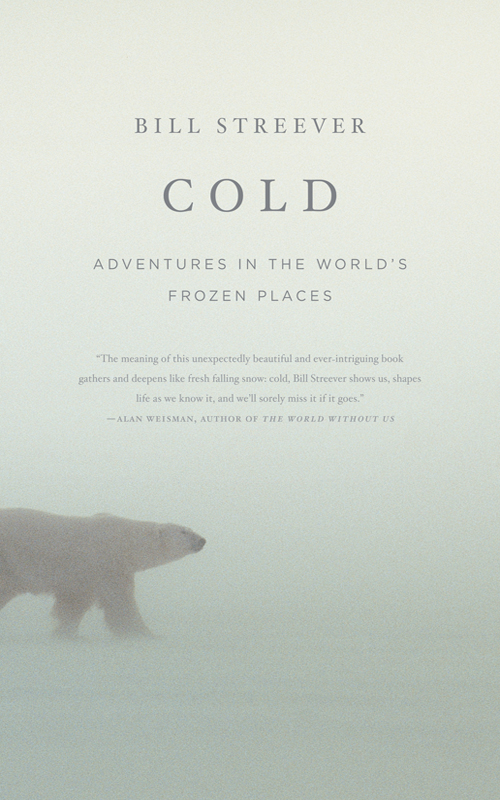Copyright 2009 by Bill Streever
Illustrations 2009 by Glenn Wolff
All rights reserved. Except as permitted under the U.S. Copyright Act of 1976, no part of this
publication may be reproduced, distributed, or transmitted in any form or by any means, or stored in a database or retrieval system, without the prior written permission of the publisher.
Little, Brown and Company
Hachette Book Group
237 Park Avenue, New York, NY 10017
Visit our website at www.HachetteBookGroup.com
www.twitter.com/littlebrown
First eBook Edition: July 2009
Little, Brown and Company is a division of Hachette Book Group, Inc.
The Little, Brown name and logo are trademarks of Hachette Book Group, Inc.
ISBN: 978-0-316-05246-7
For my son, Ishmael, who never thinks
it is too cold to play outside
I think myself obliged to give my Readers an account.
Why I thought fit to write of Cold at All? The subject I have
chosen is very noble.
Robert Boyle, New Experiments and
Observations Touching Cold, 1683
The captain had been telling how, in one of his Arctic voyages, it
was so cold that the mates shadow froze fast to the deck and had
to be ripped loose by main strength. And even then he got only
about two-thirds of it back.
Mark Twain,
Following the Equator, 1897
T hroughout this book, degrees Fahrenheit are used unless noted otherwise because this is the temperature scale most familiar to readers in the United States. Forty below zero Fahrenheit is equal to forty below zero Celsius, and thirty-two degrees Fahrenheit is equal to zero Celsius.
T he world warms, awash in greenhouse gases, but forty below remains forty below. Thirty degrees with sleet blowing sideways is still thirty degrees with sleet blowing sideways. Cold is a part of day-to-day life, but we often isolate ourselves from it, hiding in overheated houses and retreating to overheated climates, all without understanding what we so eagerly avoid.
We fail to see cold for what it is: the absence of heat, the slowing of molecular motion, a sensation, a perception, a driving force. Cold freezes the nostrils and assaults the lungs. Its presence shapes landscapes. It sculpts forests and herds animals along migration routes or forces them to dig in for the winter or evolve fur and heat-conserving networks of veins. It changes soils. It preserves food. It carries with it a history of polar exploration, but also a history of farming and fishing and the invention of the bicycle and the creation of Mary Shelleys Frankenstein. It preserves the faithful in vats of liquid nitrogen from which they hope one day to be resurrected.
Imagine July water temperatures of thirty-five degrees. Imagine Frederic Tudor of Boston shipping ice from Walden Pond to India on sailing ships in 1833. Imagine Apsley Cherry-Garrard on his search for penguin eggs at seventy below zero in 1911. Imagine a dahurian larch forest that looks like a stand of Christmas trees on Russias Taymyr Peninsula at sixty below or a ground squirrel hibernating until its blood starts to freeze and then shivering itself back to life.
But none of this is imaginary. Our world warms, but cold remains. In the ordinary passing of a calendar year, the world of cold emerges. For someone with Raynauds disease, a September stroll temporarily changes cold hands into useless claws. Caterpillars freeze solid in October and crawl away in April. Average temperatures in certain towns drop to twenty below zero in January.
It is time to enjoy an occasional shiver as we worry about a newly emerging climate likely to melt our ice caps, devour our glaciers, and force us into air-conditioned rooms. It is time to embrace and understand the natural and human history of cold. Even in a warming world, a world choked by carbon dioxide and methane, cold persists, biting my lungs and at the same time leaving me invigorated, alive and well on an Arctic spring afternoon with the sun hovering low over an ice-covered horizon and the thermometer at forty below.
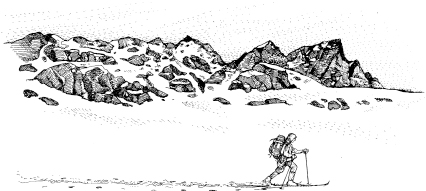
I t is July first and fifty-one degrees above zero. I stand poised on a gravel beach at the western edge of Prudhoe Bay, three hundred miles north of the Arctic Circle, and a mile of silt-laden water separates me from what is left of the ice. The Inupiat the Eskimos call it aunniq, rotten ice, sea ice broken into unconsolidated chunks of varying heights and widths, like a poorly made frozen jigsaw puzzle. A few days ago, the entire bay stood frozen. During winter, it is locked under six feet of ice. Trucks drive on it to resupply an offshore oil production facility. If one were insane, or if one were simply too cheap to fly, or if boredom instilled a spirit of adventure, one could walk north to the North Pole and then south to Norway or Finland or Russia. Temperatures would range below minus fifty degrees, not counting windchill.
But even in summer, the weather resides well south of balmy. A chill gust runs through me as I stand shirtless on the waters edge, wearing nothing but swimming shorts in the wind and rain.
The only way to do this, I tell my companion, is with a single plunge. No hesitation.
I go in headfirst. The water temperature is thirty-five degrees. I come up gasping. I stand on a sandy bottom, immersed to my neck. The water stings, as if I am rolling naked through a field of nettles. I wait for the gasp reflex to subside. My skin tightens around my body. My brain part of it that I cannot control has sent word to the capillaries in my extremities. Clamp down, my brain has commanded, and conserve heat. I feel as if I am being shrink-wrapped, like a slab of salmon just before it is tossed into the Deepfreeze.
My companion, standing on the beach, tells me that I have been in the water for one minute. My toes are now numb.
Time passes slowly in water of this temperature. I think of the ground, permanently frozen in this region to a depth of eighteen hundred feet. I think about hypothermia, about death and near death from cold. I think of overwintering animals. I think of frozen machinery with oil as thick as tar and steel turned brittle by cold. I think of the magic of absolute zero, when molecular motion stops.
After two minutes, I can talk in a more or less normal tone. But there is little to discuss. There is, just now, almost no common ground between me and my companion, standing on the beach. I feel more akin to the German soldiers whose troop carrier foundered, dumping them into Norwegian coastal waters in 1940. Seventy-nine men did what they could to stay afloat in thirty-five-degree water. All were pulled alive from the water, but the ones who stripped off their clothes to swim perished on the rescue boat. Suffering more from hypothermia than those who had the sense to stay clothed, they succumbed to what has been called afterdrop and rewarming shock. Out of the water, they reportedly felt well and were quite able to discuss their experience. But as the cold blood from their extremities found its way to their hearts, one after another they stopped talking, relaxed in their bunks, and died.
Three minutes, my companion tells me.
I am a victim of physics. My body temperature is moving toward a state of equilibrium with this water, yielding to the second law of thermodynamics. I shiver.
Several hundred miles southwest of here, six days before Christmas in 1741, the Dutch navigator Vitus Bering, employed by Russia, lay down in the sand and died of scurvy and exposure, while his men, also immobilized by scurvy, cold, and fear, became food for arctic foxes. Some accounts hold that Bering spent his last moments listening to the screams and moans of his dying men. The Bering Sea, separating Russia and Alaska, was named for him, and the island where he died, nestled on the international date line, is known today as Bering Island.



